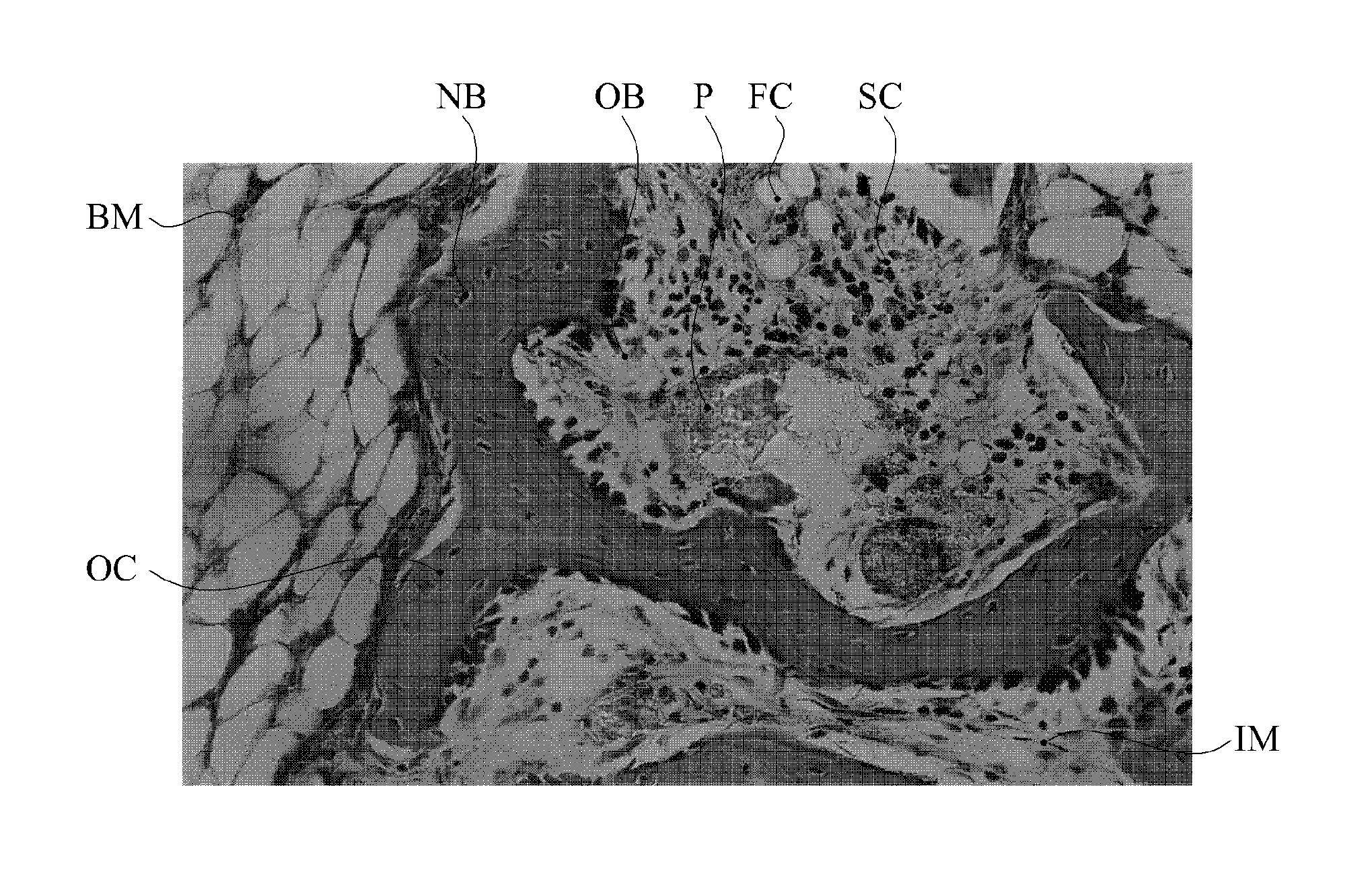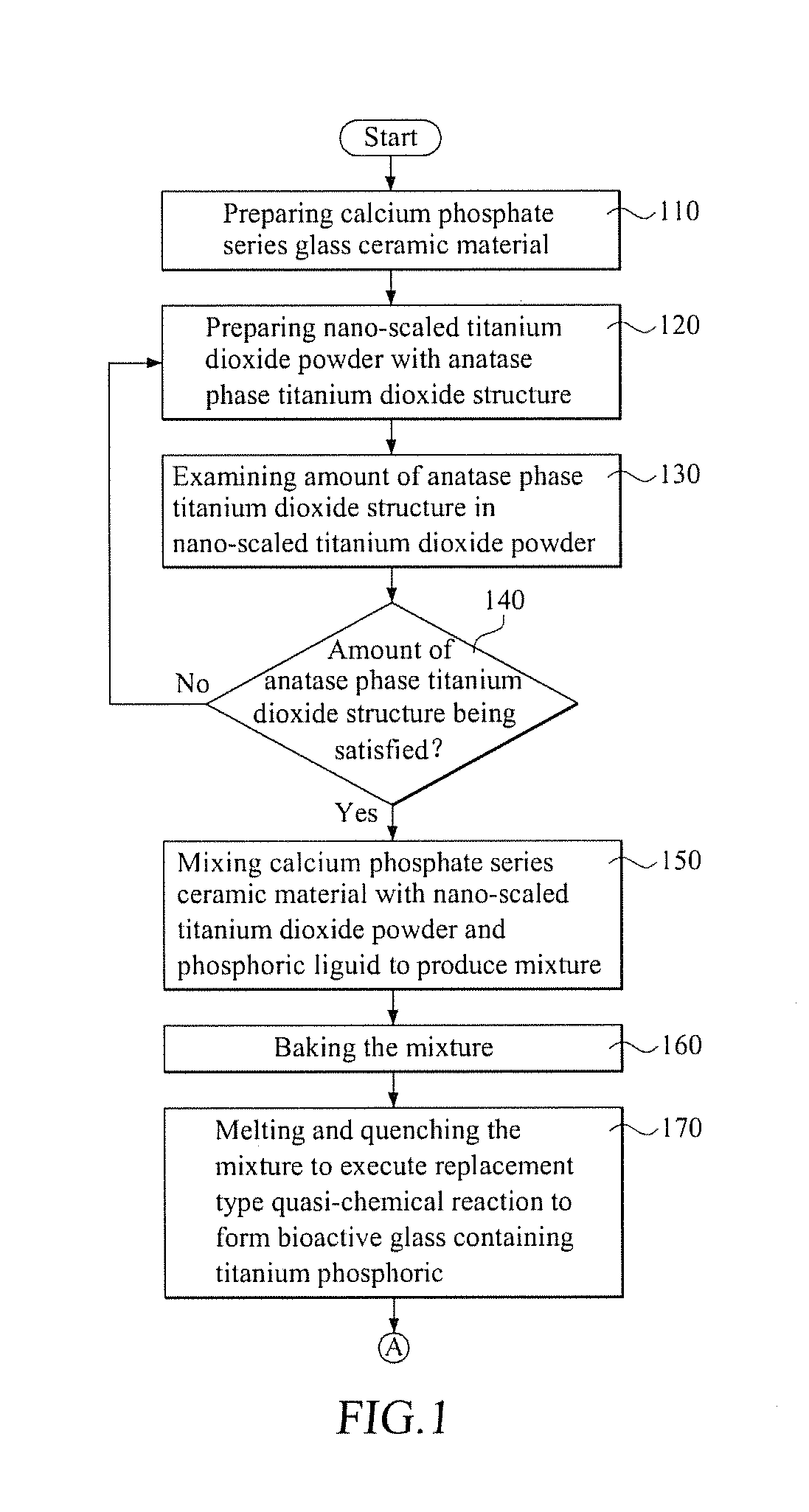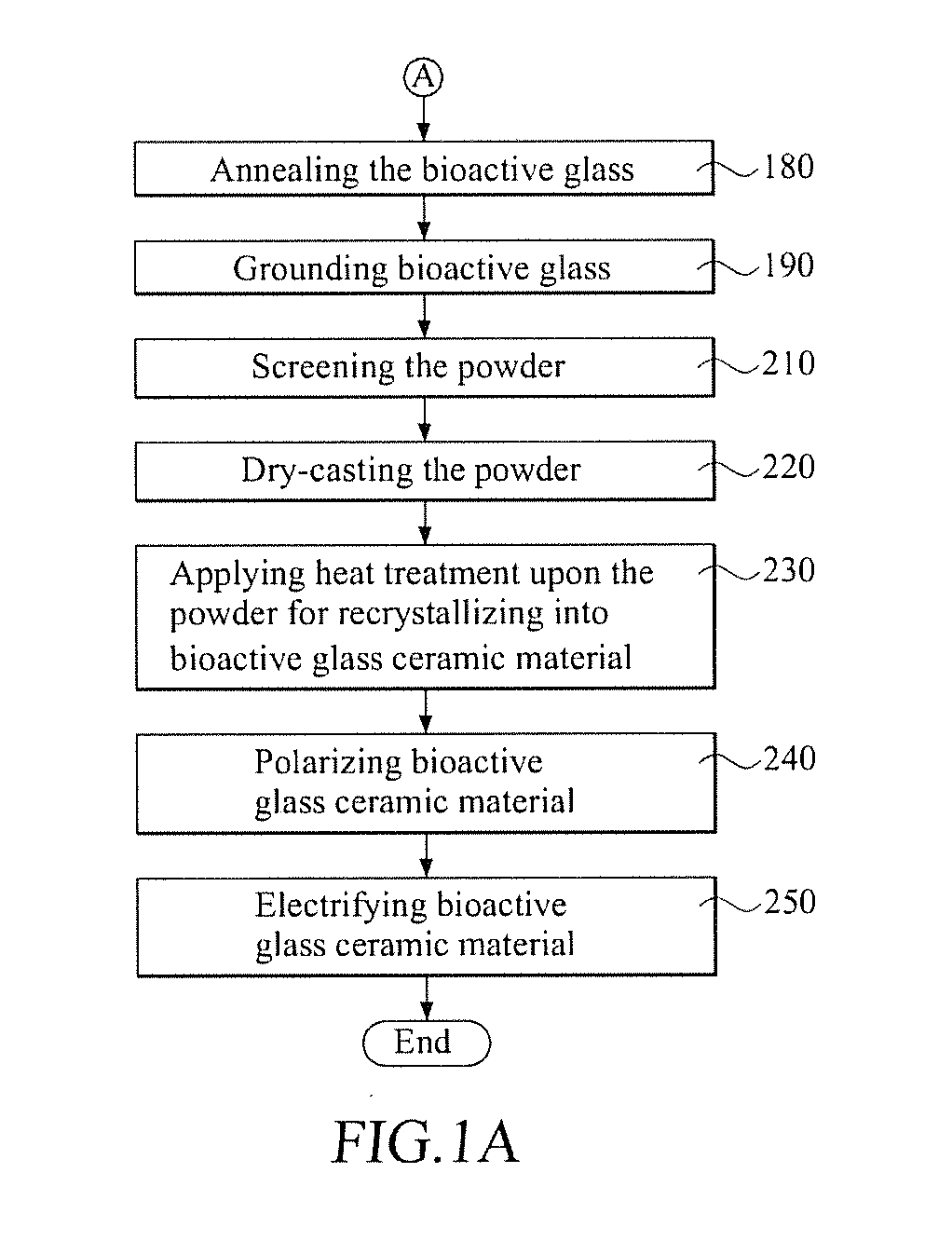Method for manufacturing a bioactive glass ceramic material
a bioactive glass ceramic and manufacturing method technology, applied in the field of bioactive glass ceramic manufacturing, can solve the problems of mechanical fatigue injury of bone tissues, inherent defects of bones, and difficulty in repairing damaged bones, so as to promote healing and healing of broken bones, and improve the recovery time of patients. , the effect of increasing the bending strength of the bioactive glass ceramic material
- Summary
- Abstract
- Description
- Claims
- Application Information
AI Technical Summary
Benefits of technology
Problems solved by technology
Method used
Image
Examples
Embodiment Construction
[0038]The following detailed description is of the best presently contemplated modes of carrying out the invention. This description is not to be taken in a limiting sense, but is made merely for the purpose of illustrating general principles of embodiments of the invention. The scope of the invention is best defined by the appended claims.
[0039]The bioactive glass ceramic material of the present invention is extensively applied to a variety of applications, and the bioactive glass ceramic material is used as a bone graft so as to promote growth of a broken bone toward recovering. Alternatives of the present invention are possible and without detailed description. The examples are provided to illustrate general principles of embodiments of the present invention.
[0040]Referring to FIGS. 1 and 1A, flowcharts of respective embodiments of the present invention are illustrated. As shown in FIGS. 1 and 1A, the present invention provides a calcium phosphate series ceramic material. Prefera...
PUM
| Property | Measurement | Unit |
|---|---|---|
| particle diameter | aaaaa | aaaaa |
| temperature | aaaaa | aaaaa |
| temperature | aaaaa | aaaaa |
Abstract
Description
Claims
Application Information
 Login to View More
Login to View More - R&D
- Intellectual Property
- Life Sciences
- Materials
- Tech Scout
- Unparalleled Data Quality
- Higher Quality Content
- 60% Fewer Hallucinations
Browse by: Latest US Patents, China's latest patents, Technical Efficacy Thesaurus, Application Domain, Technology Topic, Popular Technical Reports.
© 2025 PatSnap. All rights reserved.Legal|Privacy policy|Modern Slavery Act Transparency Statement|Sitemap|About US| Contact US: help@patsnap.com



